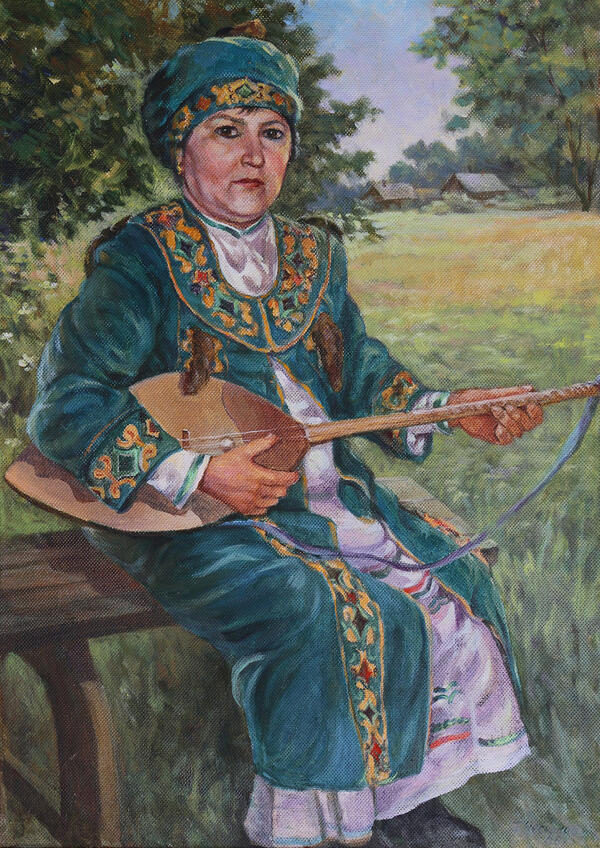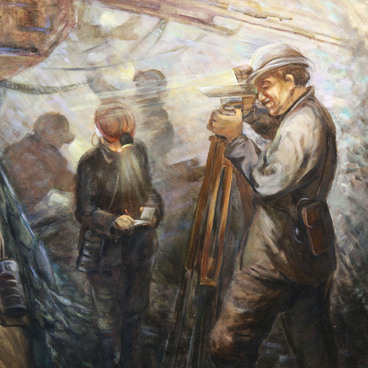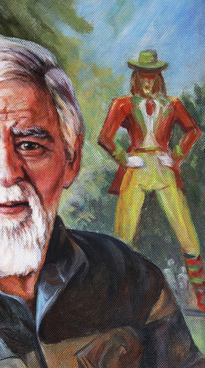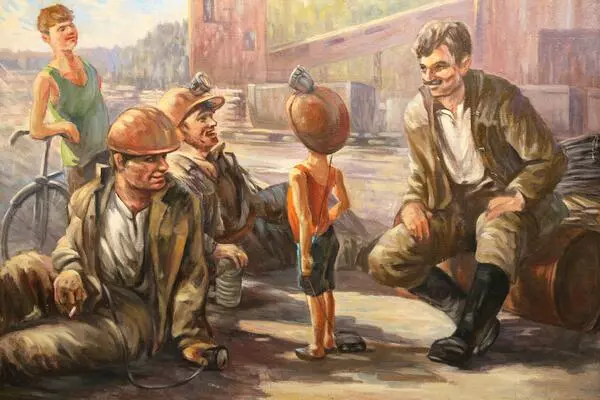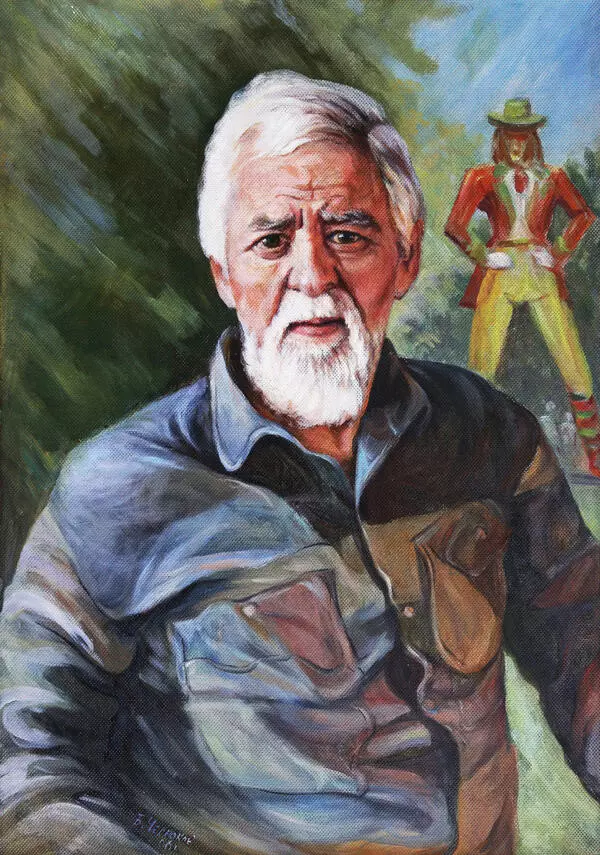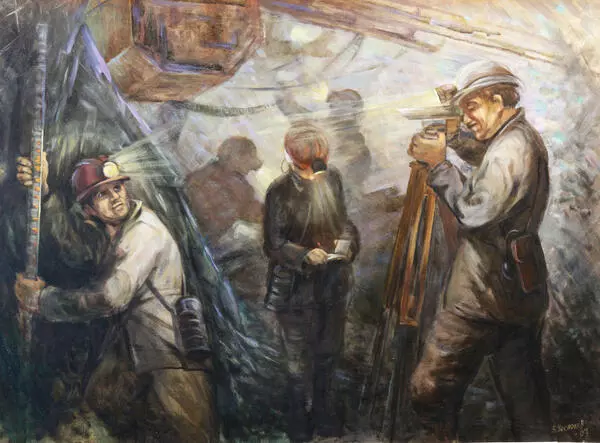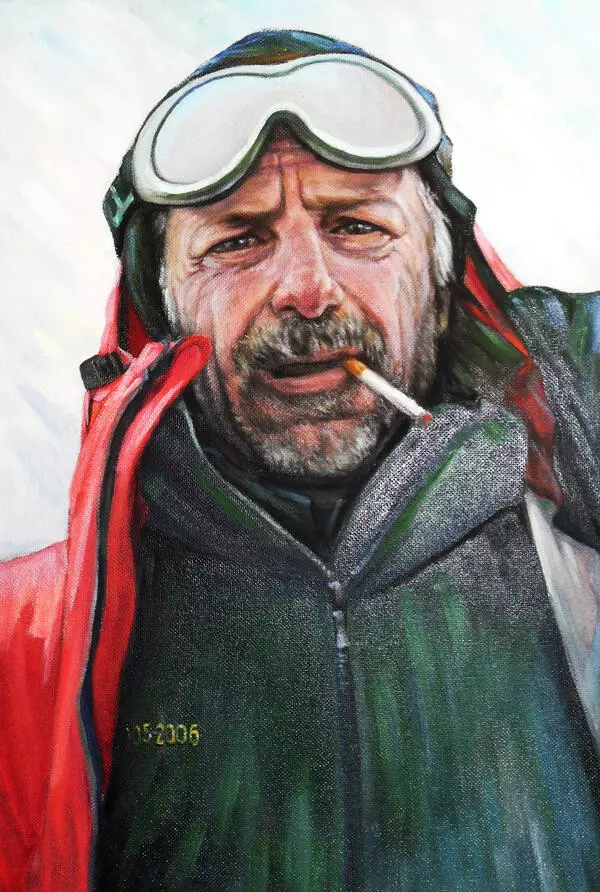The region of Mouintain Shoria takes its name from the Shorians, an ethnic group with a small population whose ancestors have lived in the south-eastern part of Western Siberia for centuries. The traditions and customs of the indigenous population have influenced the work of artists in the Kuzbass region. In this painting, which bears the expressive name Melody, the Mezhdurechensk artist Boris Vasilievich Chesnokov celebrates the unique culture of the Shorians. It shows a woman dressed in Shorian national costume. Her traditional garment, a dark green robe, is strikingly decorated with fine brightly colored embroidery on the collar and cuffs.
She is playing the kai-komus - a Shorian two-stringed plucked instrument. It is traditionally made by storytellers, from willow or cedar wood. Its two strings are made of horse hair. Its soundboard is made of a sheet of wood. The instrument is usually decorated with paintings. The Shorians in Khakassia often cover the kai- komus with leather. In regions where the Shorian and Russian cultures live side by side, it has evolved into a new musical instrument similar to a balalaika. The player holds the kai-komus on his or her knees and plucks the strings with a plectrum. The Shorians usually perform traditional songs, heroic poems and tales about ancient warriors, using either throat singing or recitative, to the accompaniment of the kai-komus. Here the instrument fills the painting with sound. In the artist’s vision the melody can be heard against a the background of the beautiful nature of Shoria. The Shorians’ drawn-out songs are always filled with a sense of love for their homeland and loved ones, and the longing and sadness experienced by a person who is far from their family home and native land.
The melody played on the kai-komus fills Boris Chesnokov’s painting, allowing the viewer almost to hear the “song of Mountain Shoria”.
Boris Chesnokov’s painting is a portrait of one of the members of Oiun, a Shorian national folk music ensemble from Mezhdurechensk, who posed for the picture. Oiun is a Shorian word that means ‘youth and happiness’.
The Oiun ensemble, which celebrated its 30th anniversary in 2016, performs at all the most important Shorian festivals and celebrations, including Pairam, Chyl-Pazhi, the Day of Shorian Culture, Shorian national congresses, regional festivals, and the many cultural events held in Mezhdurechensk and towns in the surrounding region. The ensemble has won many awards for its great contributions to the revival of Shorian culture.
She is playing the kai-komus - a Shorian two-stringed plucked instrument. It is traditionally made by storytellers, from willow or cedar wood. Its two strings are made of horse hair. Its soundboard is made of a sheet of wood. The instrument is usually decorated with paintings. The Shorians in Khakassia often cover the kai- komus with leather. In regions where the Shorian and Russian cultures live side by side, it has evolved into a new musical instrument similar to a balalaika. The player holds the kai-komus on his or her knees and plucks the strings with a plectrum. The Shorians usually perform traditional songs, heroic poems and tales about ancient warriors, using either throat singing or recitative, to the accompaniment of the kai-komus. Here the instrument fills the painting with sound. In the artist’s vision the melody can be heard against a the background of the beautiful nature of Shoria. The Shorians’ drawn-out songs are always filled with a sense of love for their homeland and loved ones, and the longing and sadness experienced by a person who is far from their family home and native land.
The melody played on the kai-komus fills Boris Chesnokov’s painting, allowing the viewer almost to hear the “song of Mountain Shoria”.
Boris Chesnokov’s painting is a portrait of one of the members of Oiun, a Shorian national folk music ensemble from Mezhdurechensk, who posed for the picture. Oiun is a Shorian word that means ‘youth and happiness’.
The Oiun ensemble, which celebrated its 30th anniversary in 2016, performs at all the most important Shorian festivals and celebrations, including Pairam, Chyl-Pazhi, the Day of Shorian Culture, Shorian national congresses, regional festivals, and the many cultural events held in Mezhdurechensk and towns in the surrounding region. The ensemble has won many awards for its great contributions to the revival of Shorian culture.

